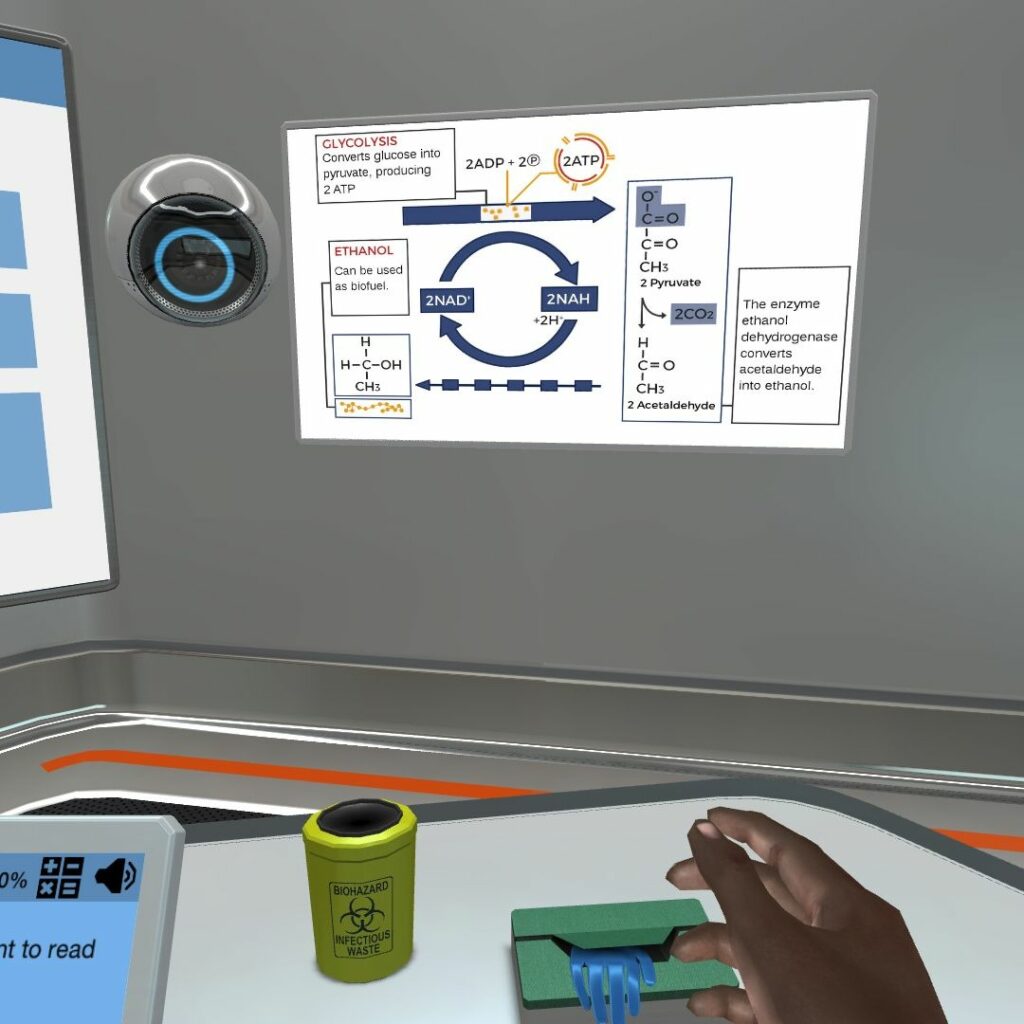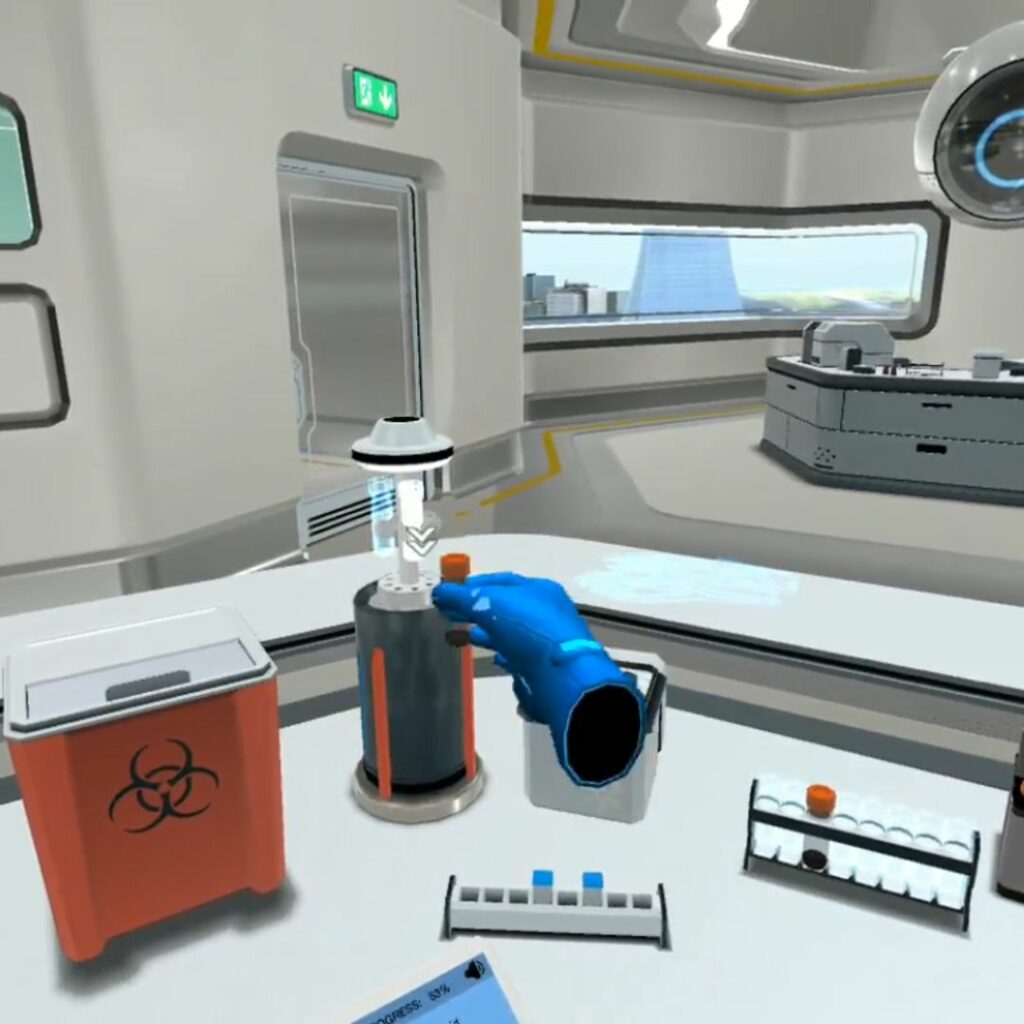Virtual simulators are available only to registered users via links to each simulator.
1. Fermentation: Optimize bio-ethanol production

Learning objectives
At the end of this simulation, you will be able to:
- Simulate yeast batch fermentation
- Outline the principles of fermentation and its applications
- Summarize the principal components of a fermentor and their function
- Experiment with the effect of temperature, pH, gas, and agitation on fermentation
- Analyze growth curves qualitatively to identify optimal growth parameters
2. From Algae to Bioenergy

Learning objectives
At the end of this simulation, you will be able to:
- Describe the reaction that yields biodiesel from oil
- Detail the procedure for producing biodiesel from oil
- Apply hazard identification skills to safe working practice in the laboratory
- Safely deploy heated magnetic stir plates as part of a protocol
3. Pigment Extraction: Use photosynthesis to produce biofuel and reduce pollution

Learning objectives
At the end of this simulation, you will be able to:
- Understand the importance and uses of photosynthesis
- Understand properties of light and why pigments are colorful
- Analyze the absorbance spectra and chemical properties of pigments
- Develop a hypothesis and set up an experiment to test it
4. Simple Distillation: Recycle waste from biodiesel production

Learning objectives
At the end of this simulation, you will be able to:
- Explain the application of the distillation technique
- Calculate the mole % composition of a mixture
- Describe how the mole % composition of the mixture changes as the distillation proceeds
- Set up a simple distillation experiment and describe the function of the different components
- Justify the correct assembly of the cooling system and the location of the thermometer
- Interpret boiling point composition curves and temperature vs. volume plots
- Understand the dependency of the boiling temperature on the atmospheric pressure
- Explain when to use simple or fractional distillation and why

